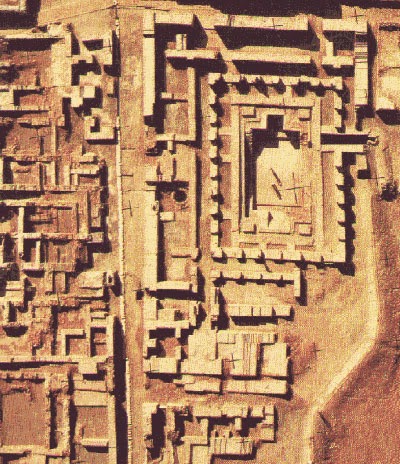Chandragupta Maurya, an exiled
member of the royal family of Magadha, a kingdom established on the bank of
river Ganges since 700 BC, captured Punjab with his allies after the death of
Alexander. Later on he formed the Mauryan Empire by overthrowing the ing of
Magadha in 321 BC. After 24 years of kingship, his son Bindusara succeeded
Chandragupta who also added Deccan to the Mauryan rule.
Ashoka, son of Bindusra, has
appeared as one of the greatest rulers of the world known till date. He ruled a
very vast empire and he also tried to rule it compassionately. Afterwards the
loss of thousands of lives during the conquest of Kalinga, Ashoka decided to rule his vast Empire by the law of
piety. He built Buddhist monasteries for the purpose to spread Buddhism
throughout and outside the Sub-continent. He also sent missionaries to the
other lands to spread the religion.
Around 195 BC, the Kabul River
Valley was conquered by Demetrius, the Greek king of Bactria. The Greeks
rebuilt Taxila and Pushkalavati and declared them as their twin capital cities
in Gandhara. In 75 BC the Scythians, Iranian nomads from central Asia succeeded
these lands and they were further followed by powerful Parthians in 50BC, from
east of the Caspian sea.
In 53 BC the northern area of
Pakistan became under the rule of Parhtians after they defeated the Greeks.
During the era of economic prosperity and trade of Parthians, they promoted
religion and art. The development of the Gandhara School of art took place which
clearly reflects the glory of Persian, Indian, Syrian and Greek traditions of
art.
Kujula, the Kushana king, a ruler of
nomad tribes from central Asia took control of Gandhara when he overthrew the
Parhtians around 64 AD. The Kushans extended their rule further into the Bay of
Bengal and the northwest India, in south they went till Bahawalpur and short of
Gujrat, in north they entered till Kashgar and Yarkand, inside the Chinese
frontier. Purushapura (The city of Flowers), today it is known as Peshawar was
the winter Capital of their Empire and north of Kabul was the summer capital.
Kanishka, one of the greatest ruler
of the Kushans Empire, who ruled in between years 121-151. Trade with Romans
flourished during his rule. They used to trade in gold for perfumes, jewelry,
spice, dyes and textiles. There was great progress at his time in literature
and medicine. A vast number of stupas and monasteries for Buddhists were built
and the most famous and best sculptures were produced in the Gandhara School of
art. Due to his unending expansionist pursuits, he was killed by his own people
while he was sleeping.
The Kushans Empire was seized from
both the sides. In north the Sassanian Empire from Persia eroded their rule,
while the Gupta Empire took its hold in the south. Due to the decline of prosperity and trade in the 4th century, Kushans Empire was reduced
down to Kidar (Little) Kushans dynasty. The capital was now at Peshawar.
During the 5th century,
Gandhara was once again invaded by the White Huns; originally they were
horse-riding nomads from China, who came from Central Asia. Buddhism started to
disappear from the northern Pakistan due to the declining prosperity and the
sun and fire worshiping Huns ruling the area. The Gandhara School of art lost
its glory with the decline of the rule.
Huns were defeated by Sassanians and
Turks in the year 565. Most of the area was left to be ruled by small Hindu
kingdoms, while the Turki Shahi rulers were the major people who were
controlling this whole land from Gandhara till Afghanistan. The raja of Kashmir
as ruling northern Punjab with areas east to the Indus. As the most of people
were converting towards the Brahman Hindus, the decline of Buddhism continued.
The Central Asian Hindu Shahis
overthrew the Turki Shahis and ruled this land from the year 870 till 1008. The
capital of their Empire was established at Hund on the Indus. They extended
their rule from Jalalabad in Afghanistan to Multan and they covered as far in
the north as Kashmir.
Reference: http://storyofpakistan.com/ancient-empires-of-the-sub-continent/
Author: Waqas Ali
waqas_ali_90@hotmail.com










